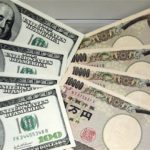Yesterday’s trade saw USD/JPY within the range of 123.23-123.99. The pair closed at 123.78, soaring 0.32% on a daily basis, or the most modest daily gain since July 6th, when it appreciated 0.13%. The daily high has also been the highest level since June 24th, when the cross registered a high of 124.38.
At 9:37 GMT today USD/JPY was up 0.14% for the day to trade at 123.94. The pair broke the weekly R1 level and touched a daily high at 123.97 during Asian trade. It has been the fourth attempt for a test of the 124.00 level since late June.
Fundamentals
United States
Initial, Continuing Jobless Claims
The number of people in the United States, who filed for unemployment assistance for the first time during the week ended on July 10th, probably decreased to 285 000 from 297 000 in the prior week. The latter has been the highest number of claims since the week ended on February 27th, when 320 000 claims were reported. The 4-week moving average, an indicator lacking seasonal effects, was 279 500, marking an increase of 4 500 from the previous week’s revised up average.
Initial jobless claims number is a short-term indicator, reflecting lay-offs in the country. In case the number of claims dropped more than projected, this would have a bullish effect on the greenback.
The number of continuing jobless claims probably fell to the seasonally adjusted 2 295 000 during the week ended on July 3rd. There were 2 334 000 claims registered during the week ended on June 26th. The latter represented an increase by 69 000 compared to the revised up number of claims, reported during the week ended on June 19th. This indicator reflects the actual number of people unemployed and currently receiving unemployment benefits, who filed for unemployment assistance at least two weeks ago.
The Department of Labor is to release the weekly report at 12:30 GMT.
Philadelphia Fed Manufacturing Index
The Philadelphia Fed Manufacturing Index probably fell to a reading of 12.0 in July from 15.2 index points during the previous month. The latter has been the highest level since December 2014, when the gauge was reported at 24.5. The index is based on a monthly business survey (the Business Outlook Survey), measuring manufacturing activity in the third district of the Federal Reserve, Philadelphia. Participants give their opinion about the direction of business changes in overall economy and different indicators of activity in their companies, such as employment, working hours, new and existing orders, deliveries, inventories, delivery time, price etc. The survey is conducted every month since May 1968. The results are presented as the difference between the percentages of positive and negative projections. A level above zero is indicative of improving conditions, while a level below zero is indicative of worsening conditions. Lower-than-expected index readings would have a certain bearish effect on the greenback. The Federal Reserve Bank of Philadelphia is expected to release the official results from the survey at 14:00 GMT.
Yellen’s testimony
Also at 14:00 GMT Federal Reserve Chair Janet Yellen is to testify before the Senate Banking Committee. Medium-to-high volatility across the board could be introduced during the Questions & Answers session following the testimony.
Yesterday USD/JPY received support, after in her testimony to the House Financial Services Committee, Yellen reiterated that the Federal Reserve was on course to introduce the first interest rate hike in a decade by the end of 2015, in case macroeconomic conditions continue to improve in line with expectations.
Japan
BoJ policy decision
At its meeting on policy on July 14th, Bank of Japan left its key interest rate unchanged at 0% and kept its pledge to expand the monetary base by JPY 80 trillion each year.
According to fragments of the central bank’s latest Policy Statement: “Japan’s economy has continued its moderate recovery. Oversees economies — mainly advanced economies — have been recovering, albeit with a lackluster performance still seen in part. In this situation, exports have been picking up albeit with some fluctuations. As corporate profits have improved and business sentiment has generally stayed at a favorable level, business fixed investment has been on a moderate increasing trend.”
“With regard to the outlook, Japan’s economy is expected to continue its moderate recovery trend. The year-on-year rate of increase in the CPI is likely to be about 0 percent for the time being, due to the effects of the decline in energy prices.”
“Compared with the forecasts presented in the April 2015 Outlook for Economic Activity and Prices, the growth rate will likely be somewhat lower for fiscal 2015, but will likely be more or less unchanged for fiscal 2016 and 2017. The year-on-year rate of increase in the CPI will likely be broadly in line with the April forecast.”
“Quantitative and qualitative monetary easing (QQE) has been exerting its intended effects, and the Bank will continue with the QQE, aiming to achieve the price stability target of 2 percent, as long as it is necessary for maintaining that target in a stable manner.”
Bond Yield Spread
The yield on Japanese 2-year government bonds went as high as 0.017% on July 15th, or the highest level since July 13th (0.028%), after which it slid to 0.010% at the close to lose 0.003 percentage point on a daily basis.
The yield on US 2-year government bonds climbed as high as 0.677% on July 15th, after which it fell to 0.645% at the close to gain 0.004 percentage point for the day.
The spread between 2-year US and 2-year Japanese bond yields, which reflects the flow of funds in a short term, expanded to 0.635% on July 15th from 0.624% during the prior day. The July 15th spread has been the most notable one since July 13th, when the yield difference was 0.671%.
Meanwhile, the yield on Japan’s 10-year government bonds soared as high as 0.462% on July 15th, after which it slid to 0.461% at the close to appreciate 0.009 percentage point compared to July 14th, while marking a second straight day of increase.
The yield on US 10-year government bonds climbed as high as 2.432% on July 15th, after which it slipped to 2.372% at the close to lose 2.5 basis points (0.025 percentage point) on a daily basis, while marking a second consecutive day of decrease.
The spread between 10-year US and 10-year Japanese bond yields narrowed to 1.911% on July 15th from 1.936% on July 14th, while marking a second straight day of contraction. The July 15th yield difference has been the lowest one since July 8th, when the spread was 1.740%.
Pivot Points
According to Binary Tribune’s daily analysis, the central pivot point for the pair is at 123.67. In case USD/JPY manages to breach the first resistance level at 124.10, it will probably continue up to test 124.43. In case the second key resistance is broken, the pair will probably attempt to advance to 124.86.
If USD/JPY manages to breach the first key support at 123.34, it will probably continue to slide and test 122.91. With this second key support broken, the movement to the downside will probably continue to 122.58.
The mid-Pivot levels for today are as follows: M1 – 122.75, M2 – 123.13, M3 – 123.51, M4 – 123.89, M5 – 124.27, M6 – 124.65.
In weekly terms, the central pivot point is at 122.02. The three key resistance levels are as follows: R1 – 123.67, R2 – 124.58, R3 – 126.23. The three key support levels are: S1 – 121.11, S2 – 119.46, S3 – 118.55.





